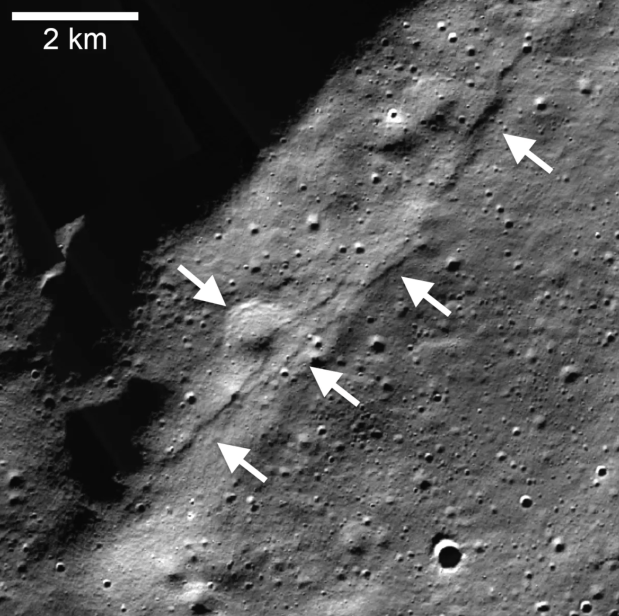It is evident that the south pole of the Moon may not be the most suitable location for landing.
A recent study reveals that a significant moonquake that occurred in the 1970s is linked to multiple faults located in the southern polar region, as well as areas that are susceptible to landslides.

Throughout its history, the Moon’s crust has been shaped by seismic events, resulting in the cracks and cliffs that are visible today. These distinctive features emerged as the Moon underwent a shrinking process, causing different sections of the crust to be pushed on top of each other.
A recent investigation focusing on surface warping in the Moon’s south polar region has revealed compelling evidence suggesting that certain regions designated for future landings are situated close to or within fault zones, making them susceptible to moonquakes. The findings of this study were published in The Planetary Science Journal on January 25, 2024.
A shaky and shrinking Moon
The Moon has undergone a reduction in size as its core gradually cooled. An earlier examination of images from NASA’s Lunar Reconnaissance Orbiter (LRO) revealed that the Moon’s shrinkage is comparable to that of a grape transforming into a raisin. This analysis also determined that the Moon is still experiencing shrinkage, resulting in moonquakes along the developed faults.
A recent study has discovered a correlation between a series of fractures in the Moon’s southern polar region and a powerful moonquake recorded by Apollo seismometers in the 1970s. By employing computer models, the research team assessed the stability of the surface in that specific area and identified certain slopes that are prone to landslides triggered by moonquakes.
“Our models indicate that shallow moonquakes, capable of causing significant ground shaking in the southern polar region, can occur due to slip events on existing faults or the formation of new thrust faults,” stated Thomas R. Watters, the lead author of the study and an expert in planetary tectonics at the National Air and Space Museum’s Center for Earth and Planetary Studies. He further emphasized, “The widespread presence of recently formed thrust faults, their potential for activity, and the possibility of new thrust faults forming due to the Moon’s ongoing contraction should be taken into account when determining the location and stability of permanent lunar outposts.”
Artemis III
The intended human exploration mission, Artemis III, may face potential risks due to seismic activity. Moonquakes that occur at shallow depths of approximately 100 miles (161 kilometers) can endure for several hours. The Apollo Passive Seismic Network detected a significant moonquake with a magnitude of 5, which persisted throughout an entire afternoon.
NASA’s focus lies in investigating the lunar south pole as it contains areas that are perpetually shadowed, potentially harboring ice. The scheduled timeframe for Artemis III is presently set for 2026. Upon landing, astronauts will utilize navigation systems and headlamps to explore these dimly lit regions.
Prior to the initiation of these and other expeditions, the team of researchers is eager to discover additional regions that may pose a high level of risk for exploration, in order to steer clear of them.
Nicholas Schmerr, a geologist at the University of Maryland and co-author of the study, emphasized the significance of ensuring the safety of our astronauts, equipment, and infrastructure as we approach the launch date of the crewed Artemis mission. He stated that this research is instrumental in our preparations for the challenges that await us on the Moon. These preparations may involve constructing engineering structures capable of withstanding lunar seismic activity or implementing measures to safeguard individuals from hazardous zones.
Do not forget to share your opinion with us to provide you with the best posts !



0 Comments